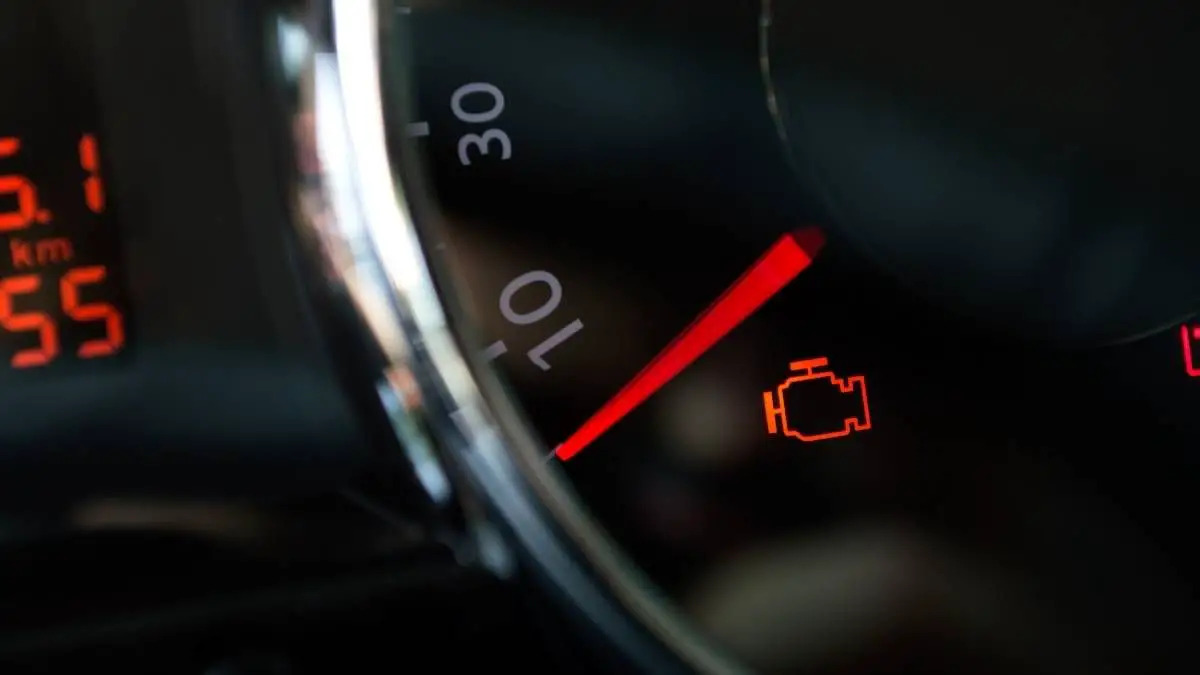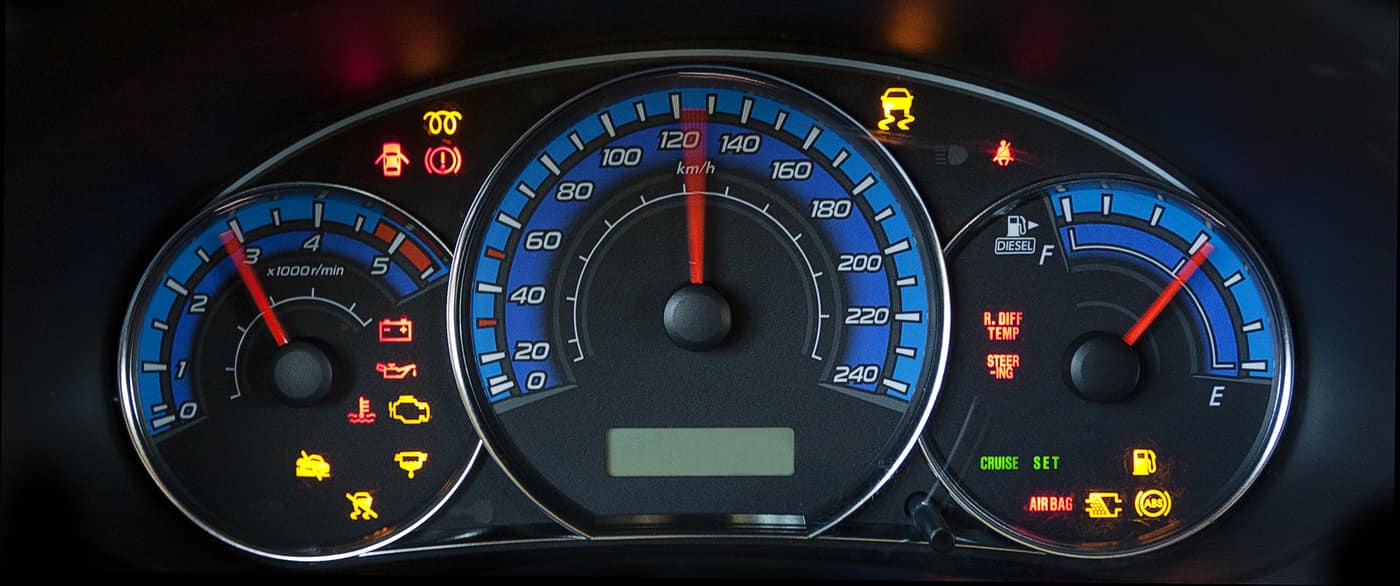

Furniture
What Does Emission Control Lamp Mean
Modified: December 7, 2023
Learn about the meaning of the emission control lamp in furniture. Discover how it indicates potential issues and the importance of addressing them promptly.
(Many of the links in this article redirect to a specific reviewed product. Your purchase of these products through affiliate links helps to generate commission for Storables.com, at no extra cost. Learn more)
Introduction
Welcome to the comprehensive guide on emission control lamps and their significance in maintaining the performance and efficiency of your vehicle. In this article, we will explore the definition of emission control lamps, their function, common causes for illumination, and the steps to take when the lamp lights up.
As automotive technology continues to advance, so does the complexity of our vehicles’ systems. The emission control system plays a crucial role in reducing harmful pollutants emitted into the atmosphere and ensuring compliance with environmental regulations.
The emission control lamp, also known as the check engine light or malfunction indicator lamp (MIL), is an essential component of your vehicle’s onboard diagnostics system. It serves as an early warning system, alerting you to potential issues with the emission control system or other related components.
Understanding the meaning behind the illumination of the emission control lamp is crucial for maintaining the health of your vehicle and minimizing the risk of more severe and costly problems down the road.
So, let’s dive deeper into the significance of the emission control lamp and how you can address any issues that may arise.
Key Takeaways:
- Promptly addressing the emission control lamp is crucial for maintaining vehicle performance, preventing costly repairs, and minimizing harmful emissions, contributing to a cleaner and greener environment.
- Proper emission control brings benefits such as improved fuel efficiency, extended engine lifespan, compliance with regulations, and contribution to a sustainable future, emphasizing the importance of addressing issues indicated by the emission control lamp.
Read more: What Does Brake Lamp Light Mean
Definition of Emission Control Lamp
The emission control lamp is a dashboard indicator that illuminates when a fault or malfunction is detected in the vehicle’s emission control system. It is typically represented by an image of an engine or the words “check engine” or “malfunction indicator.” The lamp may vary in color, commonly appearing as yellow, amber, or sometimes red.
When the emission control lamp lights up, it signifies that the vehicle’s onboard diagnostic system (OBD) has detected an issue related to the emissions control system or other components that may affect emissions. The OBD system continuously monitors various sensors and components throughout the vehicle, including the engine, exhaust system, and fuel system, to ensure proper operation and emission compliance.
It is important to note that while the emission control lamp often indicates a problem with the emission control system, it can also be triggered by issues with other systems or components, such as the ignition, fuel injection, or transmission. This is because all these systems are interconnected, and a fault in one area can impact the overall performance and emissions of the vehicle.
Modern vehicles are equipped with sophisticated onboard computer systems that monitor various parameters and compare them to predefined thresholds. When a parameter falls outside these preset boundaries or an abnormal reading is detected, the OBD system triggers the emission control lamp to alert the driver of the potential issue.
Now that we understand the definition of the emission control lamp, let’s explore its function and why it is vital to address any incidents promptly.
Function of Emission Control Lamp
The primary function of the emission control lamp is to serve as a warning indicator for potential faults or malfunctions in the vehicle’s emission control system. It acts as an early diagnostic tool to notify the driver of any issues that may compromise the vehicle’s emissions, performance, or overall functionality.
When the emission control lamp illuminates, it indicates that the onboard diagnostic system (OBD) has identified a problem and stored a corresponding diagnostic trouble code (DTC). These codes can be accessed using a diagnostic scanner or code reader, providing valuable information about the specific issue detected.
The emission control lamp also plays a crucial role in ensuring the vehicle’s compliance with emissions standards and regulations set by environmental authorities. By promptly addressing any faults or malfunctions indicated by the lamp, you can help reduce harmful pollutants emitted by your vehicle, contributing to a cleaner and greener environment.
In some cases, the emission control lamp may flash or blink, indicating a more severe or immediate problem. This usually signifies a critical issue that requires immediate attention. In such situations, it is advisable to pull over and have the vehicle inspected by a qualified mechanic to prevent further damage or potential safety risks.
It is important to note that the emission control lamp does not provide specific details about the exact nature of the problem. It merely acts as an indicator to inform the driver that a fault has been detected within the emissions control system or related components. To determine the underlying cause, diagnostic tools, expertise, and professional assistance may be required.
Now that we understand the function of the emission control lamp, let’s explore the common causes for its illumination and why it is crucial to address these issues promptly.
Common Causes for Emission Control Lamp to Illuminate
The illumination of the emission control lamp can be triggered by various factors. It is important to address the underlying cause promptly to ensure the proper functioning of the vehicle and minimize potential damage. Here are some common reasons why the emission control lamp may illuminate:
- Loose or Faulty Gas Cap: A loose, damaged, or missing gas cap can cause a vacuum leak in the fuel system, leading to the illumination of the emission control lamp. Ensuring a tight and secure gas cap is a simple and often overlooked solution.
- Oxygen Sensor Malfunction: The oxygen sensor measures the oxygen content in the exhaust gases and provides a critical feedback signal to the engine control module. A faulty or deteriorated oxygen sensor can affect fuel efficiency and emissions, triggering the emission control lamp.
- Catalytic Converter Issues: A failing catalytic converter can cause the emission control lamp to illuminate. It is responsible for converting harmful gases into less harmful substances. If the catalytic converter becomes clogged or damaged, it can impact engine performance and emissions.
- Mass Airflow Sensor (MAF) Failure: The MAF sensor measures the amount of air entering the engine, allowing the engine control module to adjust the fuel-to-air ratio. A malfunctioning or dirty MAF sensor can cause irregular fuel mixture, resulting in increased emissions and the illumination of the emission control lamp.
- Exhaust Gas Recirculation (EGR) System Problems: The EGR system recirculates a portion of the exhaust gases back into the engine to reduce nitrogen oxide emissions. Issues with the EGR valve or related components can lead to improper recirculation, affecting engine performance and triggering the emission control lamp.
- Malfunctioning Ignition System: Problems with spark plugs, ignition coils, or the ignition control module can cause misfires, affecting engine performance and emission levels. This can result in the illumination of the emission control lamp.
- Evaporative Emission System Leaks: The evaporative emission control system prevents the release of fuel vapors into the atmosphere. Faulty components, such as the purge valve or charcoal canister, can lead to leaks in the system, causing the emission control lamp to light up.
These are just a few examples of the common causes for the emission control lamp to illuminate. It is important to note that each vehicle’s specific make, model, and year may have additional unique causes. Consulting a professional mechanic or utilizing diagnostic equipment can help identify the precise reason for the lamp’s illumination. By addressing the underlying issues promptly, you can restore proper vehicle functionality, improve fuel efficiency, and minimize harmful emissions.
Now that we understand the common causes for the emission control lamp to illuminate, let’s explore the importance of addressing these issues promptly.
The emission control lamp, also known as the check engine light, indicates a problem with the vehicle’s emissions system. It’s important to have the vehicle diagnosed by a professional to identify and address any issues.
Importance of Addressing Emission Control Lamp
Addressing the illumination of the emission control lamp in a timely manner is of utmost importance for several reasons. Ignoring or neglecting the issue can lead to more severe and costly problems down the line. Here are the key reasons why you should address the emission control lamp promptly:
- Ensure Vehicle Performance: The emission control system is intricately linked to the overall performance of your vehicle. Ignoring the illuminated lamp could result in reduced engine power, decreased fuel efficiency, and poor drivability. Addressing the underlying issue promptly will help maintain optimal vehicle performance and prevent further deterioration.
- Prolong Engine Lifespan: Many issues that trigger the emission control lamp can potentially harm the engine if left unattended. For example, a malfunctioning oxygen sensor or a clogged catalytic converter can lead to improper combustion and increased engine stress. By addressing these issues promptly, you can help extend the lifespan of your engine and avoid costly repairs or even engine replacement.
- Prevent Expensive Repairs: Addressing the emission control lamp as soon as it illuminates can prevent minor issues from escalating into major and costly repairs. Resolving a small problem, such as a loose gas cap or a faulty oxygen sensor, is significantly more affordable than dealing with extensive damage caused by prolonged neglect.
- Comply with Legal Requirements: Depending on your jurisdiction, ongoing emissions compliance may be mandatory to pass vehicle inspections and meet environmental regulations. Ignoring the emission control lamp can lead to non-compliance, resulting in fines or restrictions on using your vehicle. By promptly addressing the issues indicated by the lamp, you can ensure compliance with legal requirements and maintain your ability to use your vehicle unrestrictedly.
- Protect the Environment: The emission control system plays a crucial role in reducing harmful pollutants emitted into the atmosphere, contributing to air quality and environmental preservation. By addressing the issues indicated by the emission control lamp, you are taking a proactive step to minimize your vehicle’s negative impact on the environment.
Given these reasons, it is evident that addressing the emission control lamp promptly is vital for maintaining vehicle performance, avoiding expensive repairs, complying with legal requirements, and protecting the environment. If the lamp illuminates, it is advisable to consult a qualified mechanic or utilize diagnostic tools to identify and resolve the underlying issue effectively.
Now that we understand the importance of addressing the emission control lamp, let’s explore the steps to take when the lamp illuminates.
Read more: What Does The Genie Lamp Mean In A Car
Steps to Take When Emission Control Lamp Illuminates
When the emission control lamp illuminates on your vehicle’s dashboard, it is essential to take prompt action to address the underlying issue. Here are the steps you should follow when the emission control lamp lights up:
- Do not panic: It is natural to feel concerned or worried when the emission control lamp illuminates. However, it is important to stay calm and not panic. Remember that the lamp is a warning indicator and not an immediate emergency.
- Check the gas cap: Start by checking the gas cap to ensure it is securely tightened. A loose, damaged, or missing gas cap can cause the lamp to illuminate. Tightening the gas cap may resolve the issue, and the lamp may turn off after a few driving cycles.
- Inspect for other obvious issues: Look for any other visible signs of problems, such as leaks, low fluid levels, or frayed wires. Keep in mind that the emission control lamp can be triggered by various issues, so do not assume that a specific component is the cause without proper diagnosis.
- Do not disconnect the battery: Some individuals may suggest disconnecting the battery to reset the emission control lamp. However, this will not fix the underlying issue and may erase valuable diagnostic trouble codes (DTCs) that mechanics can use for proper diagnosis.
- Seek professional assistance: To accurately diagnose and address the issue, it is recommended to consult a qualified mechanic or automotive technician. They have the necessary tools, expertise, and knowledge to identify the specific problem and recommend the appropriate solution.
- Use a diagnostic tool: If you have access to a diagnostic tool or code reader, you can retrieve the diagnostic trouble codes (DTCs) associated with the lamp’s illumination. These codes provide valuable information about the specific issue detected by the onboard diagnostic system (OBD).
- Follow the recommended repairs: Once the underlying cause is identified, follow the recommended repairs or actions advised by the mechanic or diagnostic tool. This may involve replacing a faulty sensor, repairing an exhaust component, or addressing any other issues affecting the emission control system.
- Clear the codes: After the necessary repairs have been made, the mechanic can clear the diagnostic trouble codes (DTCs) associated with the emission control lamp. This will reset the system, and if the problem has been addressed, the lamp should no longer illuminate.
- Monitor the lamp: After the repairs and code clearing, monitor the emission control lamp to ensure it remains off during normal vehicle operation. If the lamp continues to illuminate or reappears after a short period, it may indicate an unresolved issue that requires further inspection.
By following these steps, you can take appropriate action when the emission control lamp illuminates and ensure the underlying issue is addressed effectively. Prompt attention to the lamp’s illumination can help maintain the performance and efficiency of your vehicle while minimizing the risk of more severe problems.
Now that we understand the steps to take when the emission control lamp illuminates, let’s explore the benefits of proper emission control.
Benefits of Proper Emission Control
Proper emission control plays a crucial role in maintaining the performance, efficiency, and environmental friendliness of your vehicle. Here are the key benefits of ensuring proper emission control:
- Reduced Harmful Emissions: Effective emission control systems help reduce the release of harmful pollutants into the atmosphere. By addressing any issues indicated by the emission control lamp, you contribute to minimizing air pollution and its negative impact on public health and the environment.
- Compliance with Environmental Regulations: Many regions and countries have established strict emissions standards and regulations to protect the environment and public health. Ensuring proper emission control allows your vehicle to comply with these regulations, preventing fines or restrictions on vehicle use.
- Improved Fuel Efficiency: Malfunctions in the emission control system can lead to suboptimal combustion and increased fuel consumption. By addressing these issues, you can improve fuel efficiency, saving money on gasoline or diesel expenses while reducing your carbon footprint.
- Enhanced Vehicle Performance: A properly functioning emission control system directly impacts the overall performance of your vehicle. By addressing any faults or malfunctions, you can ensure smooth and efficient engine operation, optimal power output, and a more enjoyable driving experience.
- Extended Engine Lifespan: Ignoring emission control issues can lead to prolonged stress on various engine components, which may result in premature wear and potential damage. By properly maintaining the emission control system, you can help prolong the lifespan of your engine and avoid costly repairs or replacements.
- Maximized Resale Value: A vehicle with a well-maintained emission control system is generally more attractive to potential buyers. By staying on top of emission control issues and keeping records of maintenance and repairs, you can maximize the resale value of your vehicle.
- Contribution to a Sustainable Future: As individuals, we have a responsibility to reduce our impact on the environment and move towards a more sustainable future. By ensuring proper emission control, you play a part in protecting natural resources, mitigating climate change, and preserving the planet for future generations.
These benefits highlight the importance of maintaining proper emission control in your vehicle. By addressing issues indicated by the emission control lamp and taking proactive steps to minimize your vehicle’s emissions, you can enjoy improved performance, reduced environmental impact, and a more sustainable driving experience.
Now that we understand the benefits of proper emission control, let’s conclude our comprehensive guide on emission control lamps.
Conclusion
In conclusion, the emission control lamp serves as a critical indicator of potential issues with your vehicle’s emission control system. Understanding its meaning and taking prompt action when it illuminates is essential for maintaining vehicle performance, minimizing costs, and reducing harm to the environment.
Throughout this guide, we have explored the definition of the emission control lamp, its function, common causes for its illumination, the importance of addressing it promptly, and the steps to take when it lights up. By following these guidelines, you can ensure that your vehicle remains in optimal condition and complies with environmental regulations.
Remember, when the emission control lamp illuminates, it is important not to panic but to remain calm and take appropriate action. This includes checking the gas cap, inspecting for visible issues, seeking professional assistance, and addressing the underlying problem identified by diagnostic tools or mechanics.
Proper emission control brings numerous benefits, such as reduced harmful emissions, compliance with regulations, improved fuel efficiency, enhanced vehicle performance, extended engine lifespan, and maximized resale value. Additionally, by maintaining proper emission control, you contribute to a more sustainable future by minimizing your vehicle’s impact on the environment.
In conclusion, staying proactive and attentive to the condition of your vehicle’s emission control system will help ensure that it operates at its best, reduces pollution, and provides a reliable and efficient driving experience.
So, the next time the emission control lamp illuminates, remember to act promptly and consult a qualified professional to address the underlying issue. By doing so, you not only benefit yourself and your vehicle but also contribute to a cleaner and greener world.
Frequently Asked Questions about What Does Emission Control Lamp Mean
Was this page helpful?
At Storables.com, we guarantee accurate and reliable information. Our content, validated by Expert Board Contributors, is crafted following stringent Editorial Policies. We're committed to providing you with well-researched, expert-backed insights for all your informational needs.














